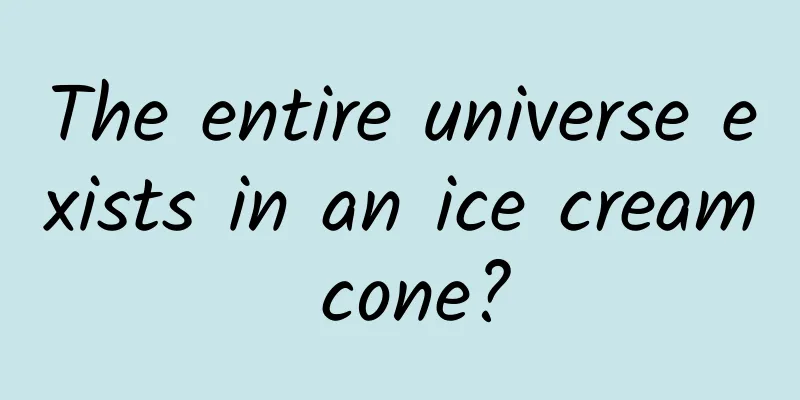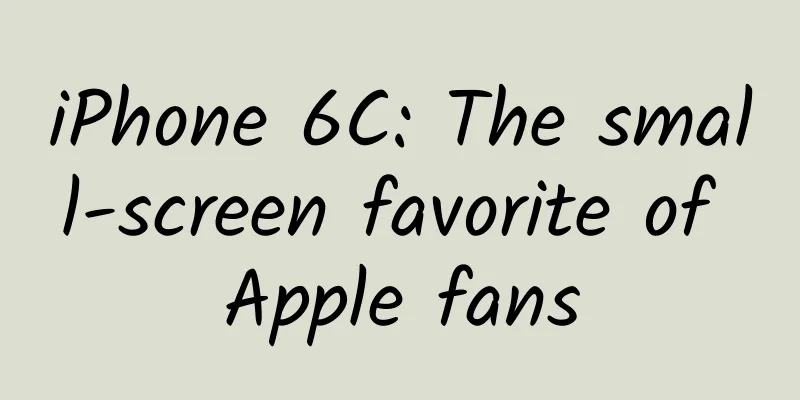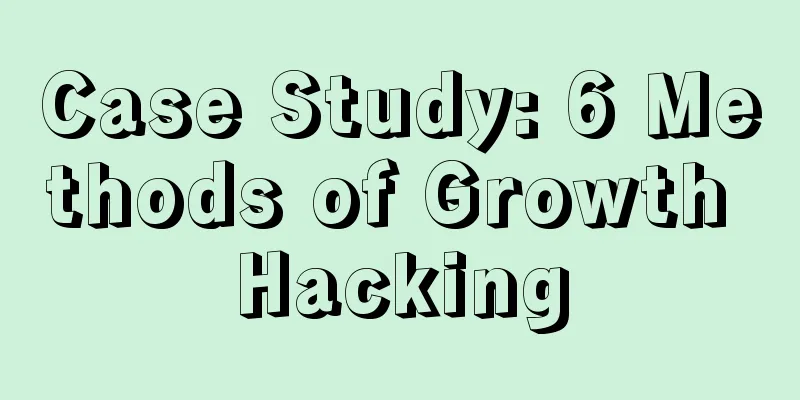30 years of conflicting astrocyte research finally comes to a conclusion

|
Astrocytes are an important component of the nervous system. They play a vital role in the maintenance and protection of neural networks and have complex and diverse functions. Whether astrocytes participate in electrical signaling is a long-standing question, and previous in vitro experiments have given contradictory results. A recent study published in Nature confirmed for the first time the existence of a specific subpopulation of astrocytes that can release glutamate through exocytosis, thereby participating in the electrical signaling of the nervous system. Written by Veronica (Tsinghua University School of Medicine) The nervous system is mainly composed of two types of cells: neurons and neuroglia (or glial cells, referred to as glial cells). For a long time, it has been generally believed that the functional activities of the nervous system are mainly undertaken by neurons, while glial cells are regarded as "background cells" that only have auxiliary functions such as providing support, nutrition and protection for neurons. However, with the deepening of relevant research, this view has gradually been challenged - the role of glial cells is far more than that. In September 2023, an article published in Nature magazine confirmed for the first time that there is a specific subpopulation of astrocytes that can release glutamate through exocytosis, thereby participating in the electrical signaling of the nervous system. This discovery overturned traditional cognition, revealed that astrocytes play an important physiological role in the nervous system, and opened up new ideas for the treatment of complex neurological diseases. 01 Astrocytes: the most numerous and functionally complex glial cells In 1856, German pathologist Rudolf Virchow (1821-1902) first described glial cells[1], regarding them as connective tissue that connects neurons in the brain and spinal cord. The word glia comes from the Greek word for glue, which also reflects scientists' initial understanding of the function of glial cells - "gluing" neurons together and weaving them into a tight neural network. In the human central nervous system, the number of glial cells is 10 to 50 times that of neurons, up to 1 to 5x10^12[2]. Similar to neurons, glial cells also have protrusions on their surfaces, but they are not divided into dendrites and axons. They cannot form chemical synapses with each other, but are connected by gap junctions. If neurons and their protrusions are compared to a forest, then glial cells are the fungi in the forest, wrapping around the tree trunks and weaving into a network. In fact, glial cells are not a single type of cell, but include multiple cell types. In the central nervous system, glial cells mainly include astrocytes, oligodendrocytes, and microglia, while in the peripheral nervous system, they mainly include Schwann cells and satellite cells. Figure 1. Fluorescence microscopy of the central nervous system. In the image, neurons (blue) are surrounded by a large number of glial cells, including astrocytes (red) and oligodendrocytes (green). | Source: Jonathan Cohen/NIH Our protagonist today is astrocytes. Astrocytes are the most numerous and most complex glial cells in the central nervous system. They are an indispensable component for maintaining the homeostasis of the nervous system and can be said to be the "stars" among glial cells. In 1871, Italian neuroanatomist and pathologist Camillo Golgi (1843-1926, the discoverer of the famous Golgi apparatus) invented the famous chromate-silver nitrate staining technique [3]. He observed the morphology of astrocytes under a microscope and divided them into two basic subtypes: protoplasmic and fibrous. In the traditional view, the former is mainly distributed in gray matter, with short and thick processes and many branches; the latter is mainly distributed in white matter, with long and straight processes and few branches. However, this classification method significantly underestimates the heterogeneity of astrocytes. In fact, in different regions of the brain and different cortical layers, astrocytes have high heterogeneity at the transcriptional and functional levels. However, there is no consensus on how this heterogeneity is formed. Astrocytes account for approximately 20–50% of the central nervous system in different species[4]. Numerous astrocytes are closely adjacent to neurons and glued together. Their long processes are interwoven into a network in the brain and spinal cord, forming a scaffold that supports neurons. The ends of astrocyte processes swell to form perivascular feet, which participate in the formation of the blood-brain barrier (BBB). These processes wrap around the nerve endings of neurons, while preventing interference between different afferent fibers, thus isolating different areas within the central nervous system. In addition to these basic functions, scientists have discovered that astrocytes have more complex functions. For example, astrocytes can take in neurotransmitters released by neurons - glutamate and γ-aminobutyric acid (GABA) and convert them into glutamine. These neurotransmitters can activate receptors on the surface of neurons, making neurons excited, thereby achieving the transmission of electrical signals between adjacent neurons. Glutamine cannot activate receptors, avoiding the continuous excitement of neurons, and can also be transported back to neurons for recycling, providing raw materials for neurons to synthesize new neurotransmitters. The human brain accounts for about 2% of the total body weight, but consumes 20% of the body's glucose. Neurons have the highest energy demand and require a continuous supply of glucose. Astrocytes can take up glucose from the blood and convert it into glycogen for storage, or convert it into lactose to provide energy for active neurons. This metabolic process is closely related to the antioxidant exchange system between astrocytes and neurons, which helps to reduce oxidative stress damage to neurons. In addition, astrocytes can also produce a variety of neurotrophic factors, which play an important role in the growth, development, survival and functional integrity of neurons. During development, astrocytes guide neuronal migration and prune synapses, regulating the formation and function of synapses. They can also serve as antigen-presenting cells in the central nervous system, presenting antigens to T lymphocytes and playing an immune response role. Unlike neurons, glial cells have the ability to divide and proliferate throughout their lives. When the brain and spinal cord are damaged and degenerated, they mainly rely on the proliferation of astrocytes to fill tissue defects. However, excessive proliferation may lead to the formation of glial cell tumors and may also become the lesion for epileptic seizures. Studies have shown that it is possible to induce glial cells to differentiate into neurons in vitro, which provides hope for the treatment of a variety of neurodegenerative diseases[5]. However, some scholars hold the opposite view and believe that glial cell-neuron conversion is not yet achievable. They used lineage tracing technology to confirm that glial cells did not transform into neurons, but that some endogenous neurons were mislabeled[6]. Figure 2. Fluorescence microscopy of astrocytes. | Image source: David Robertson, LCR / Science Photo Library 02 The debate continues: Can astrocytes participate in electrical signaling? From the above introduction, we can know that the study of astrocyte function is one of the important frontier topics, and there are still many unknowns to be explored. Among them, there is a question that has lasted for decades: whether astrocytes are involved in the electrical signal transmission of the nervous system. Electrical signal conduction is the basis for the normal functioning of the nervous system and is essential for maintaining life activities, adapting to environmental changes, and realizing the complex functions of organisms. Abnormalities in electrical signal conduction may lead to the occurrence of a variety of diseases, including neurodegenerative diseases, epilepsy, and pain disorders. In the past, the academic community believed that neurons are the only cells in the nervous system that have the function of conducting electrical signals. Some scholars believe that astrocytes may be involved in electrical signal conduction, but there is still a lack of conclusive evidence. In 1990, a research team from the Yale University School of Medicine found[7] that glutamate could induce an increase in free calcium ion levels in hippocampal astrocytes under in vitro culture conditions. The study confirmed that glutamate receptors also exist on the surface of astrocytes, indicating that they may be involved in the conduction of neural electrical signals. In 1994, a research team from the College of Zoology and Genetics at Iowa State University in the United States constructed an in vitro co-culture system of astrocytes and neurons[8] and found that after the addition of bradykinin, the calcium ion concentration in astrocytes increased, thereby inducing the release of glutamate. The released glutamate binds to the glutamate receptors on the surface of neurons, which can trigger an increase in the calcium ion concentration in neurons. In an isolated neuron culture system without astrocytes, the addition of bradykinin does not cause changes in the calcium ion concentration in neurons. This indicates that under in vitro culture conditions, astrocytes can transmit electrical signals to neurons by releasing glutamate. In 1997, Andrea Volterra's team from the Institute of Pharmacology at the University of Milan, Italy, found that the opposite conclusion also holds true [9], that is, astrocytes can respond to electrical signals from neurons. They used a fluorescent confocal microscope to observe rat brain slices and found that stimulating afferent fibers of neurons could cause fluctuations (oscillation) in calcium ion concentrations in astrocytes, and that the frequency of calcium ion concentration fluctuations was related to the stimulation pattern received by the nerve fibers. Figure 3. Schematic diagram of the “triple synapse” theory. Presynaptic neuron: presynaptic neuron; postsynaptic neuron: postsynaptic neuron; astrocyte: astrocyte; Ca2+: calcium ion concentration; nt (neurotransmitters): neurotransmitters released by neurons; gt (gliotransmitters): neurotransmitters released by glial cells | Source: Reference [10] The general theory holds that the signal transmission process between neurons is that the presynaptic neuron releases neurotransmitters, which activate the receptors on the surface of the postsynaptic neuron, causing fluctuations in the intracellular calcium ion concentration, thereby exciting the postsynaptic neuron. After discovering that astrocytes may be involved in the conduction of electrical signals, some scholars proposed the "tripartite synapse" theory [10]. This theory holds that the integration and conduction of electrical signals at the synapse not only involves the presynaptic and postsynaptic terminals, but also the adjacent perisynaptic astrocytes. Between 2000 and 2012, more than 100 papers were published in the field, supporting the fact that astrocytes participate in the conduction of neural electrical signals through synapses. However, there are also opposing voices, questioning the rationality of data collection and interpretation. The opposing view is that most experiments are conducted in astrocytes cultured in vitro, which cannot prove that the process of astrocytes releasing neurotransmitters (gliotransmission) actually occurs in vivo. In vivo experiments, the most powerful evidence comes from a transgenic mouse model in which vesicle release from astrocytes is inhibited. However, in 2014, some scholars found that this mouse model, which is widely used in astrocyte research, has defects [11], which has led to doubts about the reliability of all studies using this mouse model. In this mouse model, researchers used the glial fibrillary acid protein (GFAP) promoter to knock out the key protein (SNARE) in the vesicle transport and release process, thereby inhibiting the release of transmitters. Previous studies believed that GFAP was specifically expressed only in astrocytes, but later it was found that some neurons can also express GFAP. Therefore, this mouse model has an "off-target effect". The biological effects observed after knocking out SNARE cannot prove that the astrocyte transmitter release process exists in vivo and has physiological functions, because this effect may be related to the inhibition of transmitter release from some neurons. As mentioned above, most scholars agree that astrocytes can absorb glutamate released by neurons, thereby eliminating the persistent effects of neurotransmitters on neurons. However, whether astrocytes can participate in the conduction of neuronal electrical signals by releasing glutamate still needs more direct evidence to confirm. 03 Nature's latest study proves that astrocytes are involved in the conduction of neural electrical signals Since the discovery in 1997 that neurons can transmit electrical signals to astrocytes, Andrea Volterra's team has been committed to studying astrocyte-neuron signaling and has made outstanding contributions in this field. In September 2023, Nature magazine published a research paper by Volterra's team [12], titled "Specialized astrocytes mediate glutamatergic gliotransmission in the CNS", which provides strong evidence for the involvement of astrocytes in the conduction of neural electrical signals. Figure 4. The latest research paper by the Volterra team. | Source: Reference [12] Through the integrated analysis of 8 mouse hippocampal single-cell transcriptome sequencing open source data (single-cell RNA sequencing) and mouse hippocampal single-cell patch clamp sequencing data (patch-seq, a technology that can perform multimodal characterization of single neurons in terms of electrophysiology, morphology and transcriptomics), the researchers divided mouse hippocampal astrocytes into 9 subgroups with different molecular characteristics, and found that only one of the subgroups selectively expressed genes related to exocytosis (referring to the process of intracellular vesicles fusing with the cell membrane to transport the substances in the vesicles to the outside of the cell, which is an important mechanism for neurotransmitter release), calcium-ion-regulated exocytosis, regulation of neurotransmitter secretion, and regulation of glutamate secretion. This means that the astrocytes of this subgroup can theoretically participate in electrical signal transduction. However, the astrocytes of this subgroup are unevenly distributed in the mouse brain area, and even in specific neural circuits. To verify whether this subpopulation of astrocytes exists in the human brain, the researchers searched for the specific molecular markers they discovered in three open-source human hippocampal single-cell transcriptome sequencing data. The results confirmed that the subpopulation of astrocytes that can release glutamate also exists in the human hippocampus. Figure 5. Schematic diagram of in vitro experiments. 6-8 weeks after viral injection of mouse brain slices, researchers used two-photon confocal microscopy to take images of astrocytes. | Image source: Reference [12] The results of single-cell transcriptomic sequencing are striking, but they are still only indirect evidence. To directly confirm that specific astrocytes can release glutamate, Volterra's team used two-photon confocal microscopy to observe transmitter release in the dorsal molecular layer of dentate gyrus in the mouse brain (data predict that this area is rich in glutamate-secreting astrocytes). The researchers used glutamate receptors selectively expressed in mouse astrocytes for imaging and added synaptic release blockers to the experimental system to exclude interference from neuronal transmitter release. In order to simulate the calcium ion concentration-dependent glutamate transmitter release process mediated by G protein-coupled receptors (GPCRs) in vivo, the research team expressed GPCR receptors activated by clozapine N-oxide (CNO) in experimental mouse astrocytes. After adding CNO locally to mouse brain slices, they observed the release of glutamate transmitters in a part of astrocytes and found that these astrocytes were concentrated in a specific area, which is called the glutamate release "hotspot" area. By injecting viral vectors into mouse brain slices, the researchers specifically knocked out vesicular glutamate transporter 1 (VGLUT1) in mouse astrocytes. The experiment found that after knocking out VGLUT1, CNO-induced glutamate transmitter release could not be observed in the "hotspot" area, proving that astrocyte transmitter release is mediated by exocytosis. Figure 6. Schematic diagram of in vivo experiment. Two-photon: two-photon confocal microscope; head bar: a bar used to fix the mouse head; cranial window: cranial window for drug injection; drug: experimental drug. | Source: Reference [12] The above experiments were conducted in vitro. In order to confirm that the process of astrocyte transmitter release can occur in vivo, the researchers opened the mouse skull and used a two-photon confocal microscope to observe the release of glutamate in the primary visual cortex of awake mice. In the absence of drug stimulation, they recorded endogenous astrocyte glutamate release signals, saying that astrocytes can sense fluctuations in glutamate concentrations in the extracellular space under natural conditions. Under the stimulation of CNO, the frequency of astrocyte glutamate release increased significantly. In addition, the researchers conducted functional experiments to prove that VGLUT1-dependent astrocyte transmitter release has a protective effect against acute epileptic seizures; and that VGLUT2-dependent astrocyte signaling pathway has the function of regulating the substantia nigra-striatum circuit and is a potential therapeutic target for Parkinson's disease. The Volterra team used single-cell sequencing technology to identify the molecular characteristics of astrocytes that can release glutamate, and directly observed the process of astrocyte transmitter release through in vivo and in vitro experiments. They also used functional experiments to demonstrate the potential protective effect of astrocyte transmitter release in neurological diseases. The field of electrical conduction function of astrocytes has finally received conclusive evidence. At the same time, the results of the study also provide an explanation for the contradictory research over the past thirty years. Since only a specific subpopulation of astrocytes can release glutamate, the conclusions drawn from previous studies are closely related to the sampling of astrocytes: if the astrocytes used by the researchers are not of this specific subpopulation, glutamate release cannot be observed. Figure 7. A recent photo of Andrea Voltera. It has been 25 years since Voltera first discovered that astrocytes cultured in vitro can respond to neuronal electrical signals. This time, he brought new and important evidence. | Source: Andrea Voltera In an interview, Volterra said: "We were right that there are astrocytes that release glutamate. But we were also wrong because we thought that all astrocytes release glutamate." [13] Dimitri Rusakov, professor of neuroscience at University College London, commented: "These findings almost certainly overturn the current understanding of how brain signaling works, but exactly how they overturn it remains an open question." 04 Good research leads to more questions Proving that astrocytes can release glutamate transmitters is only the first step. There are still many questions waiting for us to answer in the future. What effect does glutamate transmitters released by astrocytes have on synapses? Which brain functions require the participation of astrocytes? Why are only specific areas of the brain rich in glutamatergic astrocytes? Of course, there are some technical issues to be solved to answer these questions - how to better label astrocytes. Ideal astrocyte markers (molecules) should be stable, able to specifically label this type of cell, and have similar expression levels in each cell. Existing markers have their own shortcomings. For example, the expression levels of GFAP (a protein involved in cytoskeleton assembly) vary greatly between different cells, and the expression levels change dramatically in disease or injury. The expression level of ALDH1L1 (a metabolic enzyme) is relatively stable but very low, making it difficult to detect by immunofluorescence/immunohistochemistry, and the protein is also expressed at a high level in liver cells. The lack of perfect cell-specific markers has brought great obstacles to the study of astrocytes. An excellent scientific study will not only answer questions, but also raise countless new questions. The huge number of astrocytes contains infinite possibilities, which has attracted a large number of scientists to devote themselves to it. As Rusakov said, "We have accumulated a lot of evidence, and now we need a theory that can integrate all the evidence together." References [1] Virchow, R. (1856). Gesammelte Abhandlungen zur Wissenschaftlichen Medizin. Meidinger Sohn & Co. [2] Wu Jiang et al. Neurology, People’s Medical Publishing House, 3rd edition, June 2015 [3] Golgi, C. (1871). Contribuzione alla fina Anatomia Degli Organi Centrali del Sistema Nervosos. Tipi Fava e Garagnani. [4] Hasel, P. (2021). Astrocytes. Current Biology, 31(7):R326-R327. [5] Wu, Z. (2020). Gene therapy conversion of striatal astrocytes into GABAergic neurons in mouse models of Huntington's disease. Nature Communications, 27;11(1):1105. [6] Wang, LL. (2021). Revisiting astrocyte to neuron conversion with lineage tracing in vivo. Cell, 184(21):5465-5481.e16. [7] Cornell-Bell, AH. (1990). Glutamate induces calcium waves in cultured astrocytes: long-range glial signaling. Science, 247(4941):470-3. [8] Parpura, V. (1994). Glutamate-mediated astrocyte–neuron signaling. Nature, 369, 744–747. [9] Pasti, L. (1997). Intracellular calcium oscillations in astrocytes: a highly plastic, bidirectional form of communication between neurons and astrocytes in situ. Journal of Neuroscience, 17(20):7817-30. [10] Perea, G. (2009). Tripartite synapses: astrocytes process and control synaptic information. Trends in Neuroscience, 32(8):421-31. [11] Sloan, SA. (2014). Looks can be deceiving: reconsidering the evidence for gliotransmission. Neuron, 17;84(6):1112-5. [12] de Ceglia, R. (2023). Specialized astrocytes mediate glutamatergic gliotransmission in the CNS. Nature, 622(7981), 120-129. [13] https://www.quantamagazine.org/these-cells-spark-electricity-in-the-brain-theyre-not-neurons-20231018/ This article is supported by the Science Popularization China Starry Sky Project Produced by: China Association for Science and Technology Department of Science Popularization Producer: China Science and Technology Press Co., Ltd., Beijing Zhongke Xinghe Culture Media Co., Ltd. Special Tips 1. Go to the "Featured Column" at the bottom of the menu of the "Fanpu" WeChat public account to read a series of popular science articles on different topics. 2. Fanpu provides a function to search articles by month. Follow the official account and reply with the four-digit year + month, such as "1903", to get the article index for March 2019, and so on. Copyright statement: Personal forwarding is welcome. Any form of media or organization is not allowed to reprint or excerpt without authorization. For reprint authorization, please contact the backstage of the "Fanpu" WeChat public account. |
<<: To know your fortune in the Year of the Dragon, do a dinosaur fortune-telling!
>>: This food is closely related to immunity, but many people may not eat enough
Recommend
The "Doctor Crew" has started work! Netizen: Why don't these glasses float?
Shenzhou 16 "Doctor Crew" Within about ...
Compared with Voyager 1, Voyager 2 has been almost forgotten. Where is it now?
Voyager 1 and 2 are a pair of sister probes, so p...
2020 Changsha Cybersecurity and Intelligent Manufacturing Conference was held in Changsha
From November 28 to 30, 2020, the 2020 Changsha C...
There will be frequent cold air in the next ten days, and there will be sandstorms in these places!
Recently, snowfall occurred in Qinghai, Heilongji...
Don’t know where your users are losing? 80% of people do conversion analysis this way
For our products and operations , conversion anal...
Cats and dogs seem very smart, so why don’t they have consciousness?
In the posts about consciousness that I have publ...
What should I pay attention to when making a 400 phone call?
When doing anything, you need to be prepared in a...
The hydrogen cup can produce hydrogen water, and drinking it can prevent cancer? The truth is...
gossip "The hydrogen cup can produce hydroge...
The moon is shrinking all the time. Will it shrink into the size of a raisin?
Produced by: Science Popularization China Author:...
Pet mind reading: Solve your dog raising troubles
Course Catalog: R-65 It’s not difficult to become...
China Mobile: China 5G Industry Development and Investment Report
The "Insight into 5G, Invest in the Future&q...
To 2019: Future survival rules for public accounts
2018. The expansion rate of some public accounts ...
Brother Qihang: Douyin brings goods: One person makes 300 videos a day and easily earns more than 100,000 yuan a month with advanced violent gameplay
So if you want to succeed, you must keep learning...
Feeling overheated physically? Remember to cool down your mind, too.
It's been so hot lately that air conditioners...
A new wave of cold air is coming! Are you ready to keep warm?
Once it gets cold Everyone tried every possible w...









